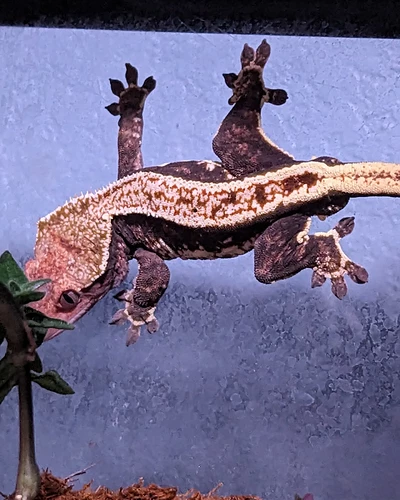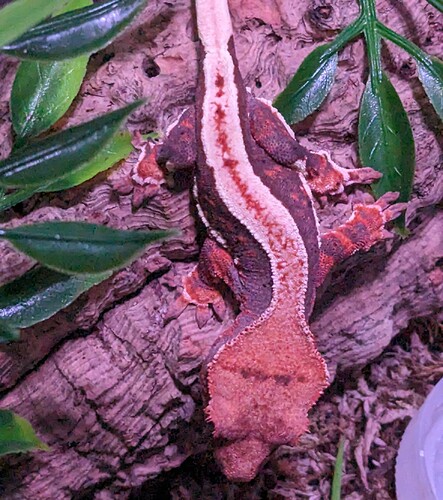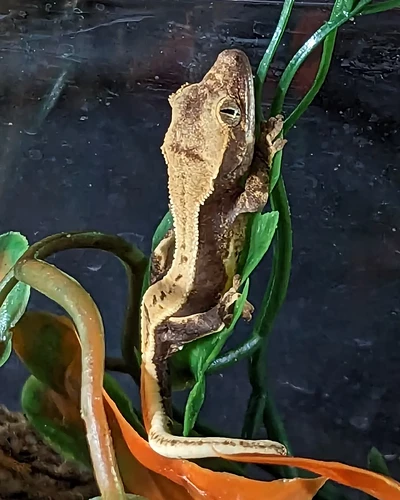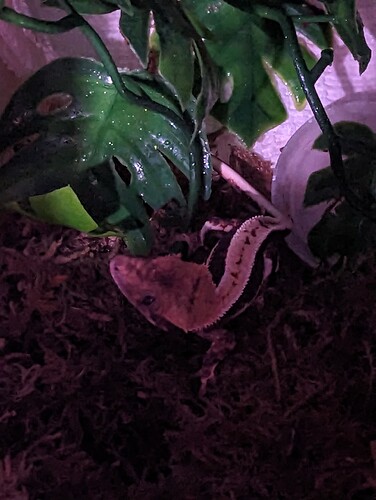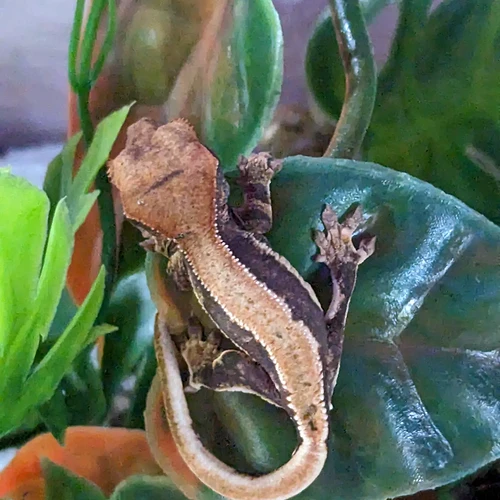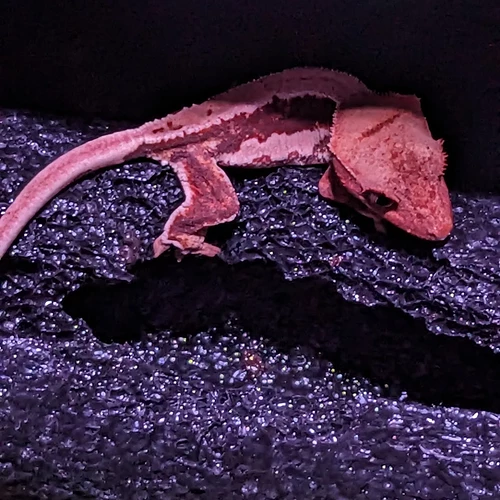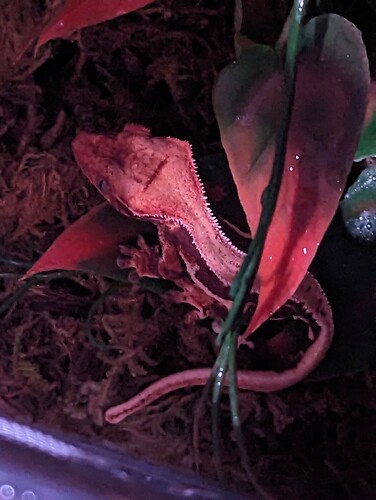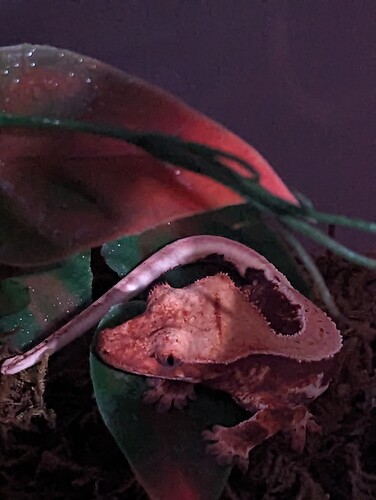I’ve got a couple of questions for anyone who’s worked with Frapps and/or Capps or someone who knows a bit more about them.
How do y’all know if you’re hatchlings are a frapp? Is there something specific that if seen means a guaranteed frapp?
I know Capps is supposed to be a Y at the base of the tail or am I misinformed on that?
(Edited to add a single S…)
3 Likes
They don’t all have the v unfortunately; and non-capps can have the v as well (very common in phantoms especially)
I believe babies tend to have a much cleaner white than non-capps, their tails tend to be grey, and their tail stamp tend to be more prominent than in non-capps. But I believe the main thing is how they progress, because they tend to lose pattern, and the white will often start bleeding towards the center of the dorsal. If the baby has a proven parent + several of these traits it’s most likely a capp.
Frapps tend to have fragmented pattern down the dorsal where non-capp lillies tend to be relatively solid.I believe they’re also typically a cleaner white when they hatch, but some normals, especially phantoms, tend to be pretty clean as well.
That being said, capp is a tricky gene, because almost all of the markers can be found in normals as well given the right gene-combo. So it’s also about knowing what your geckos throw.
There’s a big public capp group on facebook that might be worth having a look through 
4 Likes
So I know I’ve posted about my male Peppercorn before here but I’m just having serious doubts about him being just a Lilly White… could he be a low expression frapp?
His hatchlings are definitely having their dorsal pattern eaten up by the white not all of them at the moment only 2 are showing this.
1 Like
How did the babies progress? Did they hatch like this, or have they lost the white gradually? Have you made any normals that look potentially capp? I agree that he definitely is not just a lilly white, however i feel like he doesn’t look like a typical frapp either. The capp trait seems to generally be stronger near the head, and he’s got a lot of white on his. The baby looks more frapp-ish, but i feel like a normal capp from him would be a better indicator, since there are other traits that can affect the dorsal coverage.
EDIT: edited just to say that in the end without lineage the only way to know for sure is to make a super-capp, however considering their potential issues i wouldn’t recommend it.
2 Likes
I’ve got hatch photos of everyone but bandit. So let me attach these real quick.
Wild child
This was wild child a day after hatching
I know the quality isn’t the best Wild child with age as become more aloof than my other hatchlings. We recently moved her into a semi bioactive with two large big fake leaves; Her half sibling lays on them all day. She lingers in the shadows under them.
That is the latest one I have for Wild child excuse her water bowl she’s an absolute piggy. That’s why we upgraded all of them to semi bioactives:/
Sunny
This was sunny at or before 2 days after hatching
Sunny at 2 months
Sunny at 3 months
This was around 1 month ago
Neko
Neko was very aloof as a hatchling, their clutch mate Chunky monkey is very bright brown and orange I don’t have any photos of them that are worth it. My hatchlings that aren’t in semi bioactives are in gray tall tubs that I didn’t realize would look so horrible for photos.
That’s X-Files clutchmate to sunny
I do apologize for the late response I was driving and had a hard time getting the photos together on my phone
1 Like
Wanted to add- I don’t judge others but supers Capps aren’t for me. I’ve heard some supers don’t have the nostril size issue but I still wouldn’t try breeding for them.
1 Like
I agree regarding supers, I don’t think there’s a point in breeding them, but it’s unfortunately the only 100% way to know atm if you don’t have proven lineage and it isn’t super obvious. I have seen some people use LWs to “prove”, but I’ve also seen non-frapps look very similar to frapps, so it’s not 100%.
And we most likely haven’t discovered every trait/trait-interaction that exists in the hobby yet, so it could be something else.
But yeah, I don’t really see it in any of them, but I might be mistaken - If you have a facebook I would get a second opinion in the group, they have much more experience than I do. The only two that kind of has some of the markers are the first one you posted initially, and the last normal (Its tail looks dark, but i feel like it’s too orange overall).
2 Likes
Okay I appreciate it! Definitely will 
Defo Lilly imo, but who knows.
There’s many here like him, lots of odd ones in the uk! X
2 Likes

I love oddballs I love thinking of the possibilities of new morphs. I ended up pairing him to my Tri Color female I’m very excited for their hatchlings! I’m not disappointed he isn’t I’m just as happy I got Lilly White hatchlings
3 Likes
Same! Most of mine are oddballs in one way or another, sometimes it’s something, sometimes it’s not, and that’s the most exciting part of it. I do think some people are quick to just label something an oddball or low-expression and leave it at that, without actually taking a deeper look at the gecko and the possibilities. Now that we know how most of the basic traits work, I feel like it’s super obvious when something is potentially up. Just got eggs from a really exciting pairing that probably isn’t that obviously odd to most, but the male has been throwing some really cool babies at his past homes that seem to follow a pattern, so I’m excited to see if it’ll continue here 
1 Like
